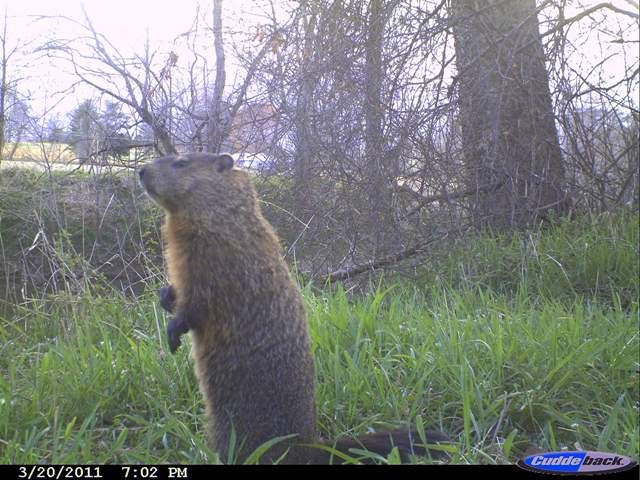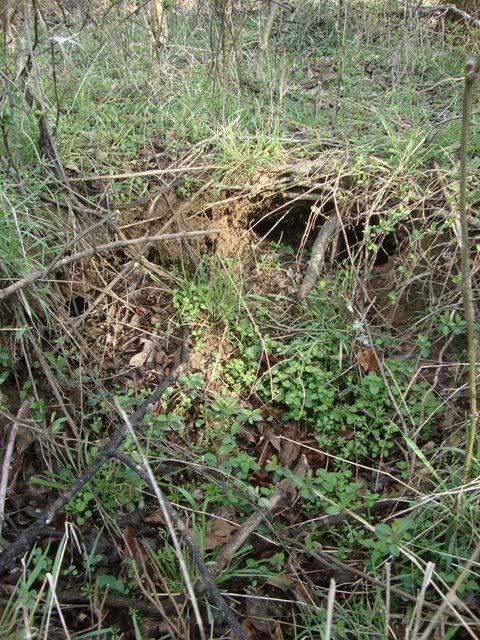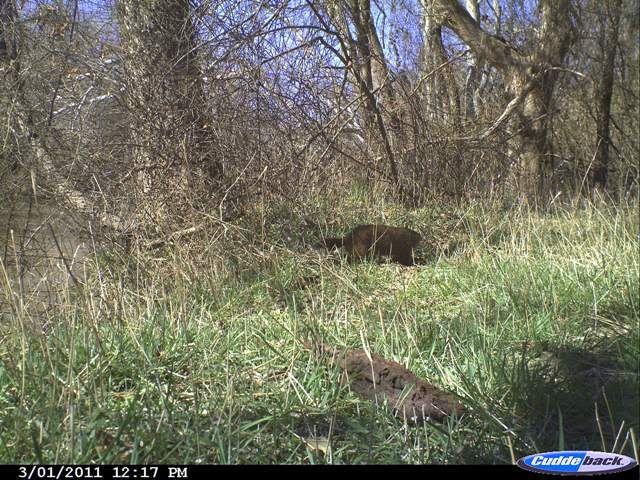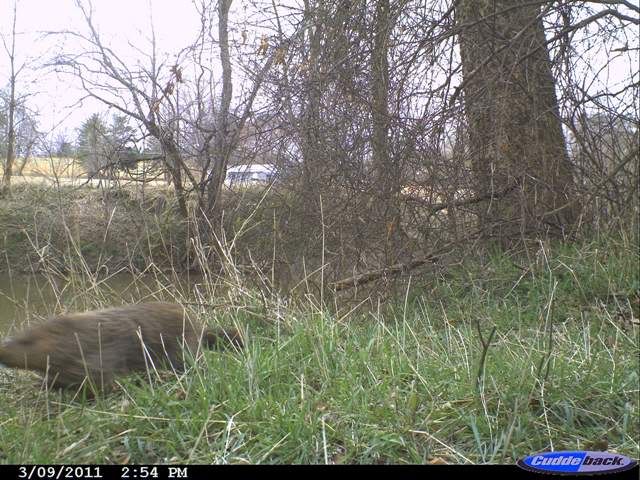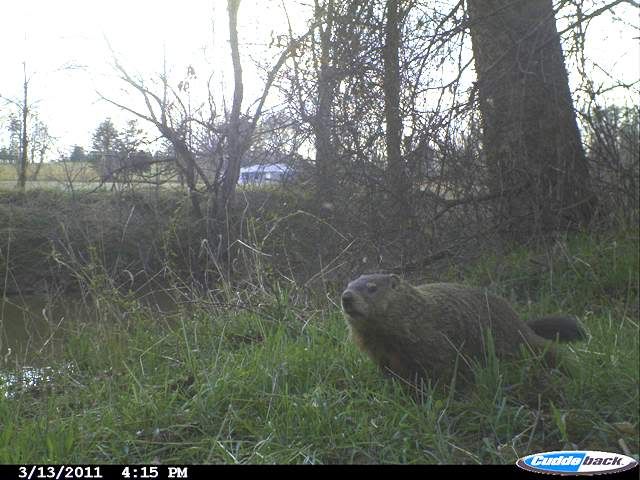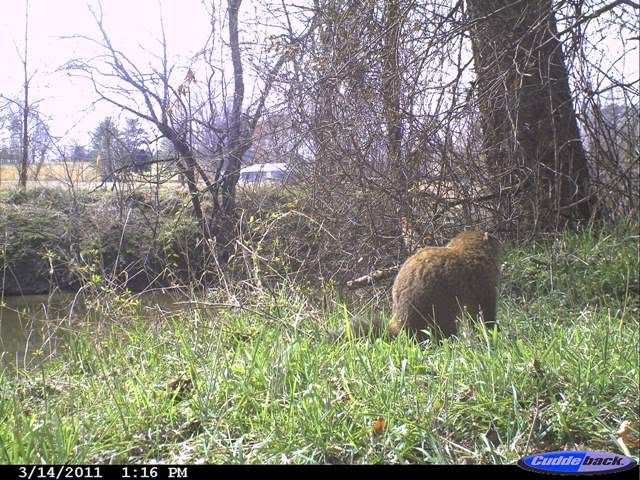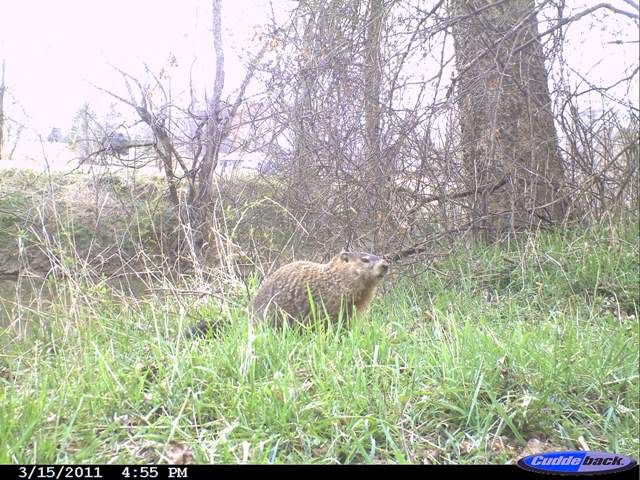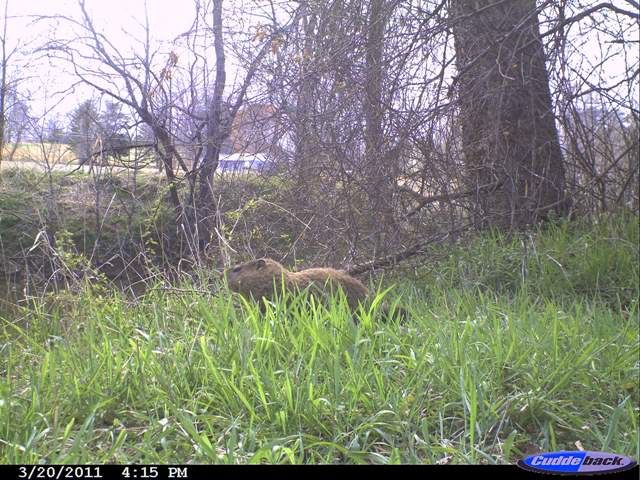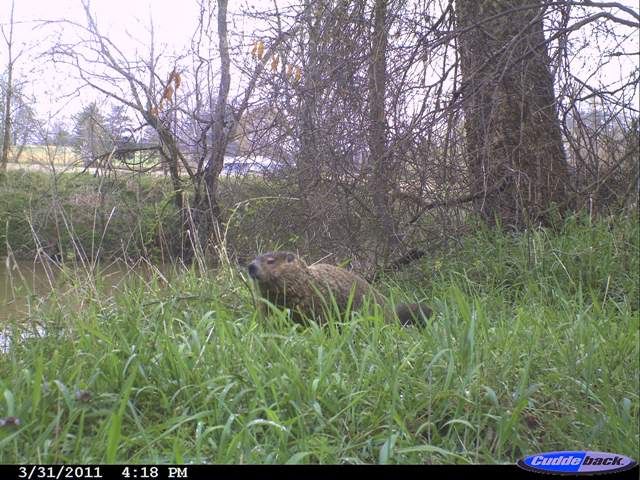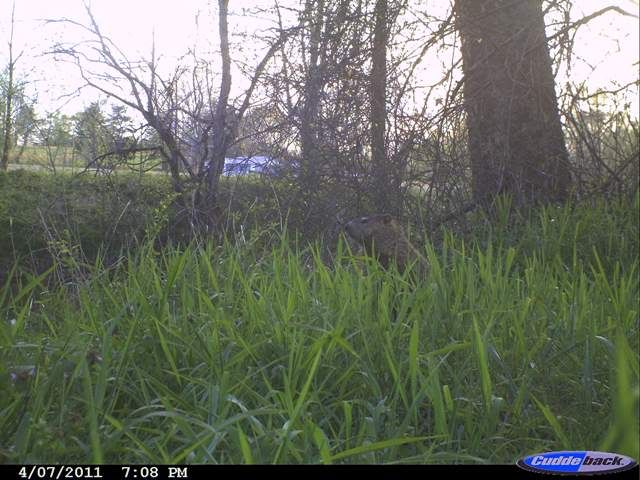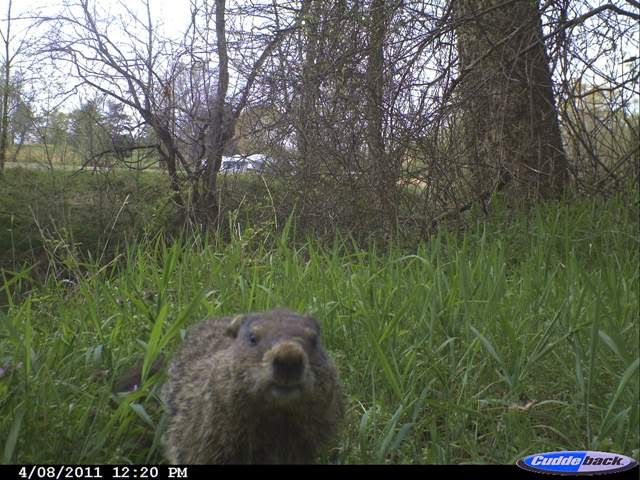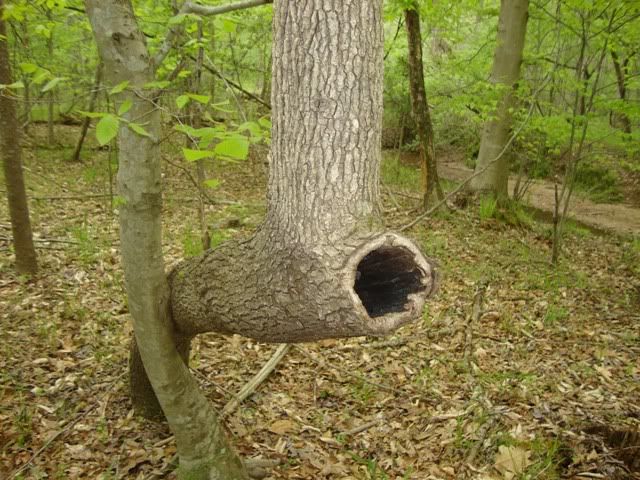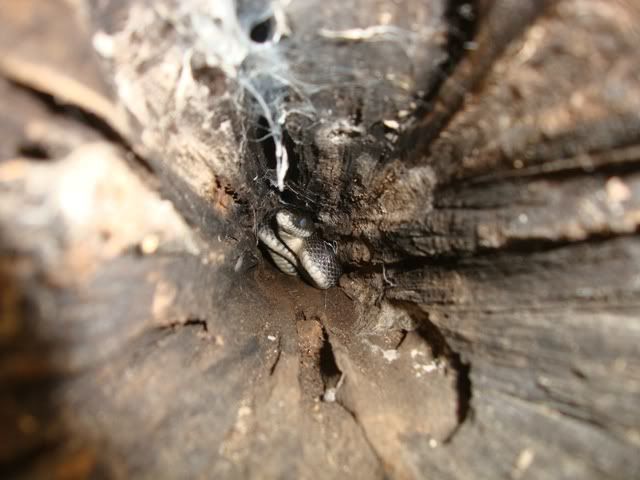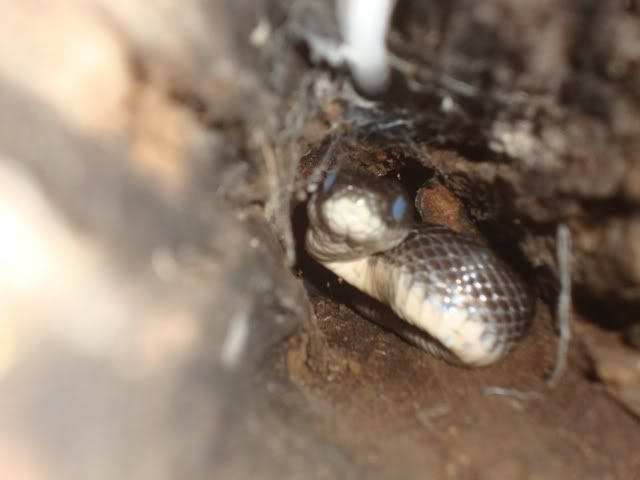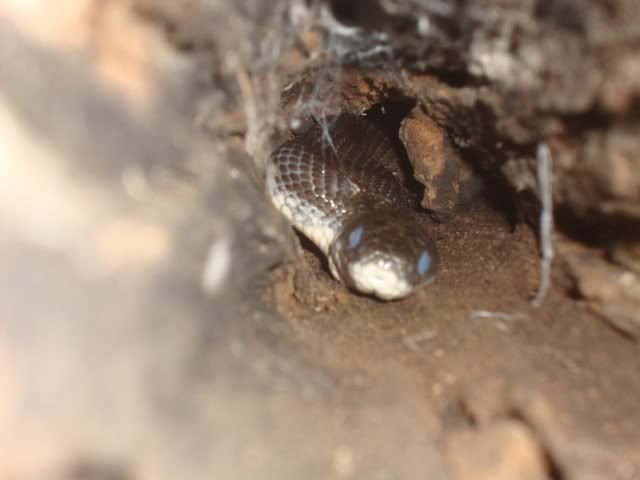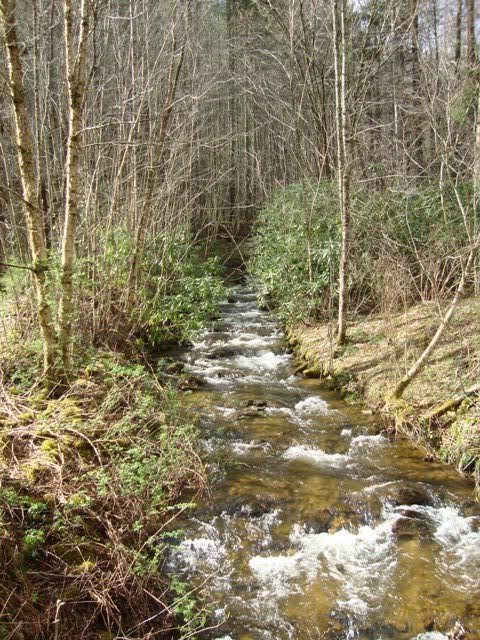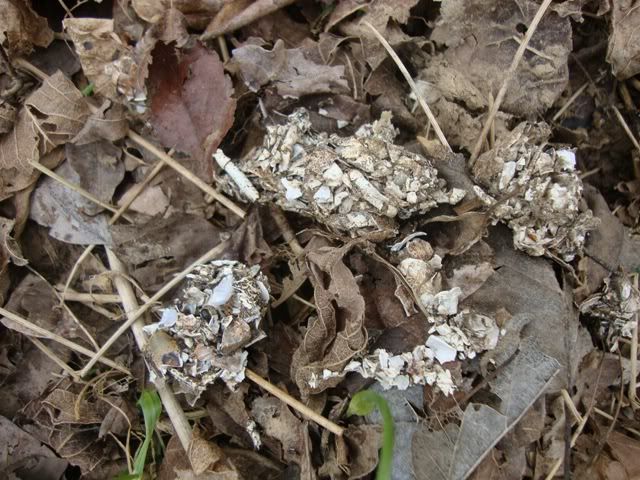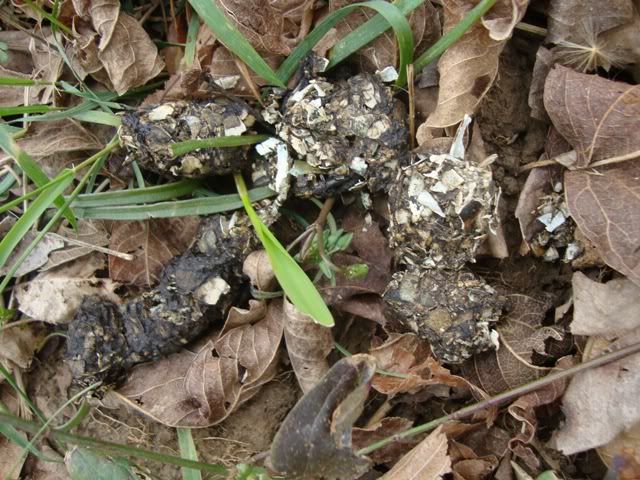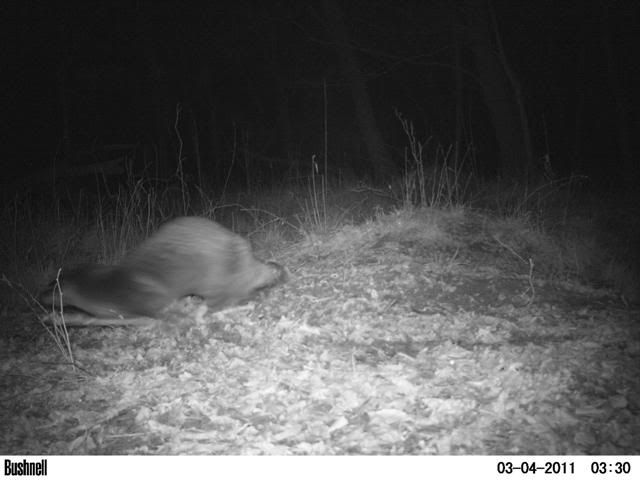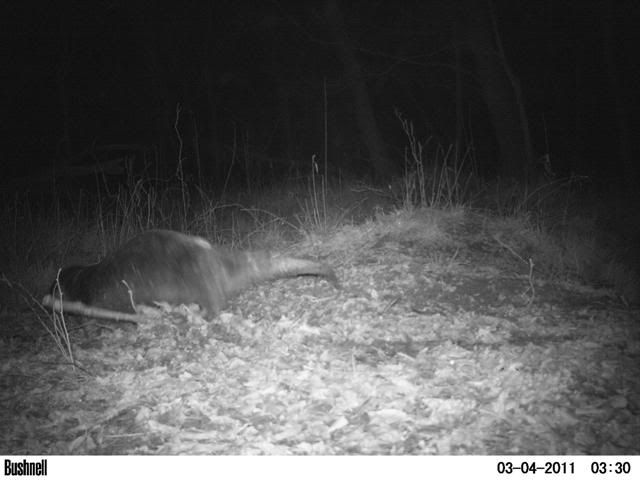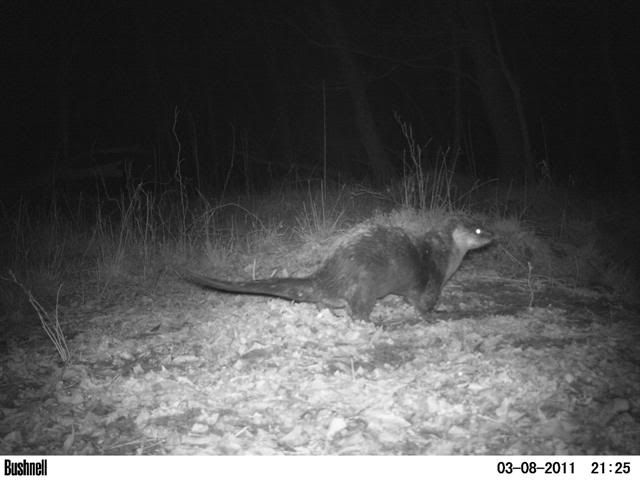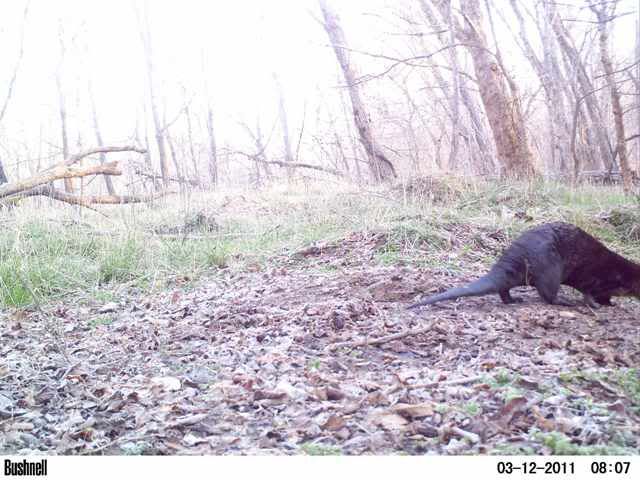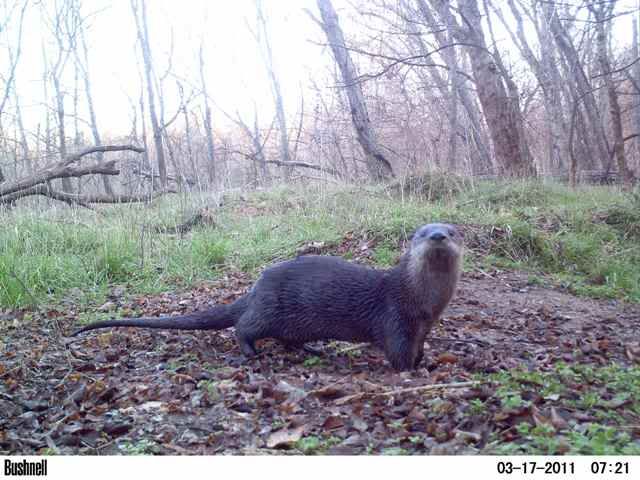Gonna break up the herp-related posts a bit with some mammal stuff.
I've been camera trapping an area along a river bank since early February 2011. The spot has yielded some interesting shots, including a mystery animal that remains un-identified (The Mystery! posted on 2/23/2011) and a nice Coyote shot (Coyote on the Otter Lure posted on 3/6/2011).
In an effort to get a better picture of the mystery animal, I repositioned the camera at this location. I was hoping to get a broad-side shot of the critter, which never happened. One of the reasons why I originally picked this spot was because there was a burrow entrance not far from the banks of the river (see below).
Above: the burrow entrance near the camera and the vacinity to the river.
Still having mink on the brain for the mystery animal, I crossed my fingers......even though the burrow didn't really look like a mink burrow (see below).
After a few weeks, I had to give up on concretely identifying the mystery animal, as it just wasn't showing up anymore. In other words...no mink....no mystery animal. I did, however, figure out what was using the burrow.
________________________________________________________________________
I like the name "Whistlepig". Something about saying it just puts a smile on my face. It's so much more enjoyable to say than the rather vulgar-sounding "Groundhog" or "Woodchuck"....but (-sigh-) the latter two seem to have stuck for this critter (Marmota monax).
But, I'm bringing back the term Whistlepig....dammit! You wont hear me use those other names ever! :)
Anyways, whistlepigs are yet another example of a species that is viewed with scorn by many humans. The scourge of gardeners, golf courses and manicured lawn-keepers across the continent! The whistlepig cares not for your expensive ornamenal flowers! It devours your garden vegetables with a cavalier flair! It laughs at your flimsy chicken wire fences! It scoffs at your silly wire box traps baited with apples!
And because of its non-conformist attitude towards your agenda....I can't help but admire the Whistlepig.
Strangely, one of these rather large rodents had been the occupant of this river-side burrow. As such, I got some pretty nice pictures of it!
The camera was first depolyed on February 9th. The Whistlepig, however, didn't start showing up until early March, probably becuase its winter dormacy had officially ended then.
In fact, the first picture I got of one actually occured on March 1st, before I repositioned the camera. In the picture below, the burrow entrance is to the right of where the whistlepig is standing. This shot isn't particularly good.
The next picture didn't come until March 7th, then another right away on March 9th. This was after repositioning the camera. In these shots, the burrow is behind the tree that the camera is mounted on. Neither picture is great. The March 7 picture isn't too bad, but the animal is looking the other way!
_______________________________________________________________________
From Mid to late-March, activity picks up considerably.
On March 13, the whistler faces the camera...but of course the photo is sort of dark.
On March 14, he decides to show off his backside again....
Finally, on March 15 I get a good shot!
Running past on March 16th.
Three pictures on March 20th, including my favorite at the bottom.
The batteries gave out on the camera in the next week and I lost a few days.
The next pictures come on March 31st. There were actually two pictures taken of him that day, but only one is worth posting.
Then the Whistlepig goes AWOL until April 7th, 8th and 11th.
The camera remains at this location and I haven't been able to check it in almost two weeks. I'm sure I have more pig pics....but I'm also sure the grass and overtaken the field-of-view. Hope to get out there early next week.
Notes on Whistlepig Ecology.
Habitat
Whistlepigs are usually considered a forest edge species, frequenting meadows, old fields and agricultural landscapes. Interestingly, Swihart (1992) found that burrows were preferentially placed in well-drained soils along woodland edges and brushy fence rows up to 2 or 3 times as often as expected. This makes the choice of the individual(s) picture above to place their burrow near the river an interesting one. A whistlepig den may have multiple entrances (up to 11 according to Merriam, 1971).
Hibernation and Activity
Hibernation is typically an adaptation to deal with a food shortage that may occur at certain times of year (Davis, 1967, Armitage et al. 2003). In the winter...for example...when vegetation (the major food of the whistlers) is in lower abundance, the animals hibernate. So, the onset of winter occurs, food becomes scarce, the animal goes into a sort of torpor and slows its metabolism so there are not the energetic requirements as when completely active. The length of the hibernation period, however, varies based on geographic location. According to Armitage (2003), early to late October is reported to be when whistlers in most regions enter hibernation (although I did see one up and active at a different location nearby on November 8 of last year). Whistlepigs in Canada hibernate for about 5.5 months (de Vos and Gillespie 1960). For about 4-4.5 months in Penssylvania (Snyder et al. 1961), and for about 3.5-4 months in Maryland (Grizzell 1955).
Armitage, K.B. 2003. Marmots (Marmota monax and Allies). In Wild Mammals of North America: biology, mamangement and conservation (second edition). Feldhamer, G.A., B.C. Thompson, and J.A. Chapman (editors). Johns Hopkins University Press (Baltimore & London).
Armitage, K. B., D.T. Blumstein, and B.C. Woods. 2003. Energetics of hibernating yellow-bellied marmots (Marmota flaviventris). Comparative Biochemistry and Physiology 103A:729-737.
Davis, D.E. 1967. The role of environmental factors in hibernation of woodchucks (Marmota monax). Ecology 48-640-644.
de Vos, A. and D.I. Gillespie. 1960. A study of woodchucks on an Ontario farm. Canadian Field-Naturalist 74:130-145.
Grizzel, R.A. 1955. A study of the southern woodchuck, Marmota monax monax. American Midland Naturalist 53:257-293.
Merriam, H.G. 1971. Woodchuck burrow distribution and related movement patterns. Journal of Mammalogy 47:103-110.
Snyder, R.L., D.E. Davis, and J.J. Christian. 1961. Seasonal changes in weights of woodchucks. Journal of Mammalogy 42:506-515.
Swihart, R.K. 1992. Home-range attributes and spatial structure of woodchuck populations. Journal of Mammalogy 73:604-618.
